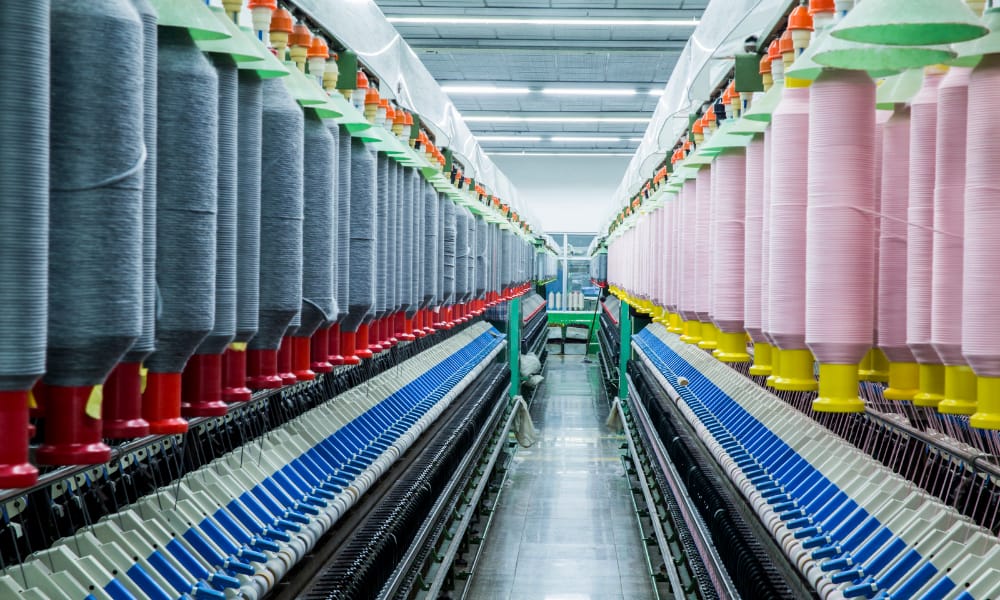India, known globally for its rich textile heritage, is poised to embark on transformative journey to revitalize its textile economy in 2024. With a strategic focus on innovation, sustainability, and global competitiveness, the Indian government has laid out ambitious plans to propel the textile industry to new heights. Let’s delve into the key initiatives and strategies aimed at boosting India’s textile sector in the coming year. India Holds a significant position as the 5th largest producer of technical textiles globally, boasting a market valued at approximately $22 billion. A visionary goal has been set to amplify this figure to $300 billion by the time India celebrates its centenary in 2047. The textile and apparel sector in India exhibits robustness throughout its value chain, spanning from fiber and yarn to fabric and apparel. It showcases a diverse spectrum of segments, encompassing traditional handloom products, handicrafts, wool, silk items, and an organized textile industry. The organized segment leverages capital-intensive technology for mass production across spinning, weaving, processing, and apparel manufacturing.One of the cornerstone initiatives in India’s textile roadmap is the revitalization of infrastructure across the textile value chain. The government aims to modernize textile manufacturing facilities, upgrade machinery, and enhance logistics networks to improve efficiency and productivity. By investing in infrastructure, India seeks to create environment for textile businesses to thrive and compete effectively in the globalmarket.Innovation lies at the heart of India’s vision for its textile industry. The government plans to foster a culture of innovation by encouraging research and development in textile technology, design, and processes. Collaborations between industry players, research institutions, and academia will be encouraged to drive innovation and create cutting-edge solutions for the textile sector. By harnessing technology and creativity, India aims to position itself as a hub for textile innovation, catering to diverse market demands.
Cotton cultivation remains integral to India’s socio-economic fabric, supporting around 6 million cotton farmers and 40-50 million individuals engaged in associated activities such as processing and trade. India’s trade in technical textile products has witnessed a steadfast ascent, with the country emerging as a net exporter. Notably, exports surged from $2.21billion in 2020-21 to $2.85 billion in 2021-22, marking a robust growth rate of 28.4%year-on-year. India’s prowess in textiles is underscored by its record-breaking textile exports,surpassing $44 billion in the fiscal year 2021-22. With the nation commanding the largest share (23%) of global cotton production and cultivation area (39%), cotton’s significance in supporting livelihoods cannot be overstated. Additionally, India’s production of raw jute inFY 2022-23 stood at 9.4 million bales, as per the Directorate of Economics and Statistics(DES). The domestic textile and apparel market is estimated at around $165 billion in 2022,comprising $125 billion in domestic consumption and $40 billion in exports. Forecasts Indicate a projected 10% Compound Annual Growth Rate (CAGR), propelling the industry’s market size to $350 billion by 2030. The textile and apparel export landscape witnessed an unprecedented upsurge, recording $44.4 billion in FY 2021-22, representing a substantial increase of 41% and 26% over the corresponding figures in FY 2020-21 and FY 2019-20,respectively. India’s cotton production in 2022-23 is estimated at 5.84 million metric tonnes,constituting 23.83% of the world’s cotton production. Furthermore, India ranks as the second-largest consumer of cotton globally, with an estimated consumption of 5.29 million metric tonnes, accounting for 22.24% of the world’s cotton consumption.India’s textile industry has long been a significant contributor to the country’s export earnings. The government aims to further enhance the export competitiveness of Indian Textiles by facilitating trade promotion activities, strengthening market access, and resolving trade barriers. Special focus will be given to promoting Indian textiles in key export markets and exploring new avenues for market diversification. By leveraging its diverse range of textiles, from traditional handloom products to modern technical textiles, India seeks to expand its global footprint and boost export revenues. India’s plans to boost its textileeconomy represent a bold and forward-thinking approach towards revitalizing one of the country’s most significant industries. By focusing on infrastructure revitalization, innovation,sustainability, artisan empowerment, and export competitiveness, India aims to unleash the full potential of its textile sector and emerge as a global leader in the textile industry. Withconcerted efforts and strategic interventions, India is poised to script a success story that notonly strengthens its economy but also preserves its rich textile heritage for generations tocome.





